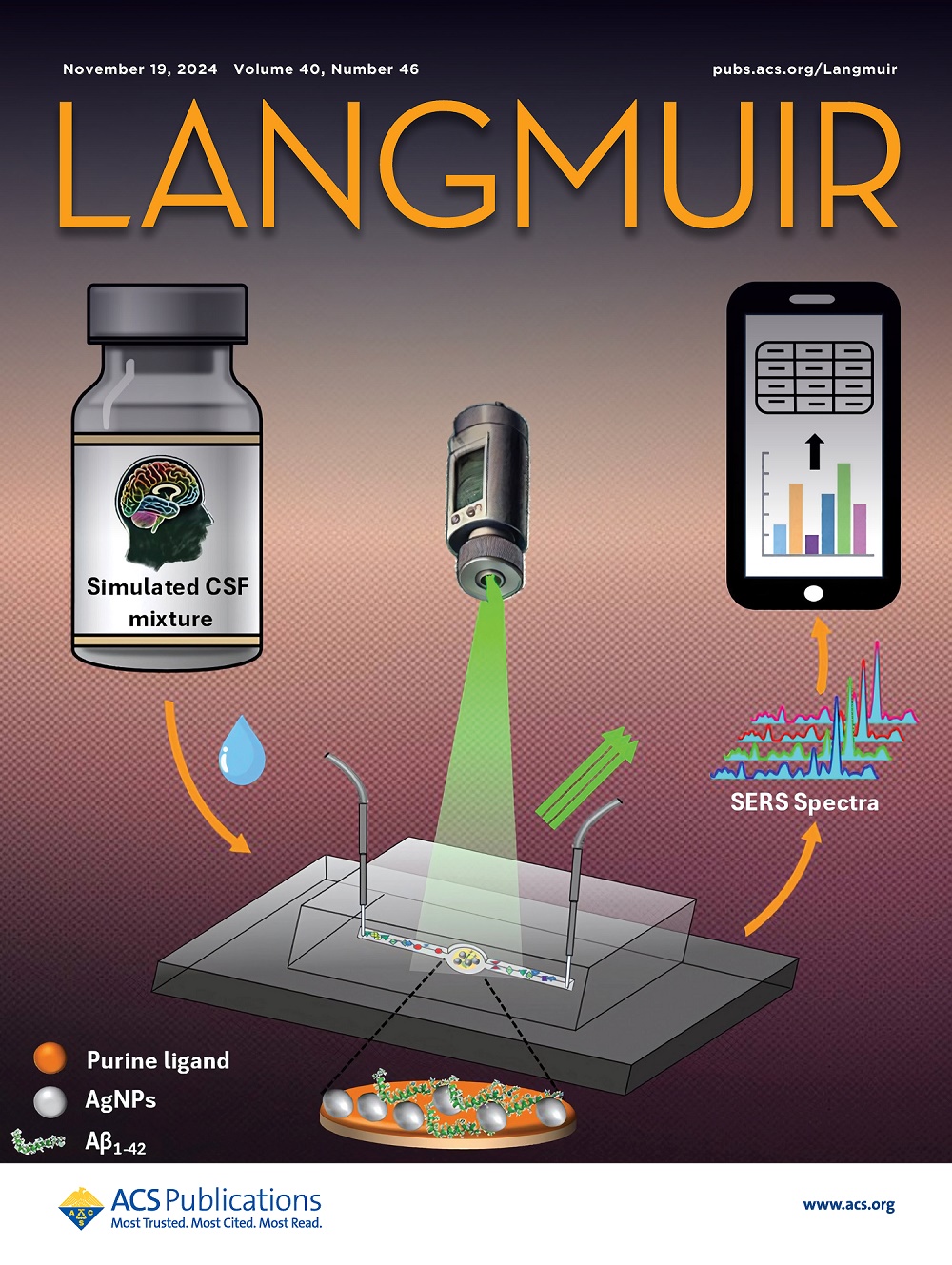快速溶剂去除后矿物表面的自组装十二烷基硫酸钠结构。
IF 3.7
2区 化学
Q2 CHEMISTRY, MULTIDISCIPLINARY
引用次数: 0
摘要
十二烷基硫酸钠(SDS)是一种广泛使用的表面活性剂,应用范围从洗涤剂到细胞裂解和纳米材料剥离。此外,SDS可以在特定条件下在不同的衬底上形成自组装结构。虽然广泛的研究已经探索了SDS在液-固界面的自组装,但对于溶剂去除后在固-气界面形成的结构知之甚少。在这项研究中,我们使用自旋涂覆和扩散涂覆的方法研究了SDS自组装结构在HOPG(高取向热解石墨)、滑石和云母基体上的分布。扫描探针显微镜显示了SDS与衬底表面相互作用形成的一系列形态,包括半圆柱形胶束、层状双层和准一维结构。在HOPG上,在稀释溶液中观察到半圆柱形胶束,而在稀释和浓缩样品中都形成了层状二维结构,可能是双层堆叠。在滑石粉上,层状双分子层表现出时间演化和高达160°C的热稳定性。云母样品表现出准一维结构、二维双层结构和较薄的二维层状结构,有证据表明存在甲基端端单层。热退火测试表明,准一维结构在60°C时失去组织,而双分子层至少在150°C时保持稳定。研究结果突出了SDS在固气界面自组装的复杂性,强调了局部环境因素的关键作用。这些发现为表面活性剂在溶剂去除过程中的行为提供了见解,并为进一步探索环境条件下的自组装体系奠定了基础。本文章由计算机程序翻译,如有差异,请以英文原文为准。
Self-Assembled Sodium Dodecyl Sulfate Structures on Mineral Surfaces Following Rapid Solvent Removal.
Sodium dodecyl sulfate (SDS) is a widely used surfactant with applications ranging from detergents to cell lysis and nanomaterial exfoliation. Additionally, SDS can form self-assembled structures on different substrates under specific conditions. While extensive research has explored SDS self-assembly at the liquid-solid interface, less is known about the structures formed at the solid-air interface following solvent removal. In this study, we investigated SDS self-assembled structures on HOPG (highly oriented pyrolytic graphite), talc, and mica substrates using spin-coating and spread-coating methods. Scanning probe microscopy revealed a range of morphologies, including hemicylindrical micelles, lamellar bilayers, and quasi-1D structures, shaped by the interaction between SDS and the substrate surface. On HOPG, hemicylindrical micelles were observed in dilute solutions, whereas lamellar 2D structures, likely bilayer stacks, formed in both dilute and concentrated samples. On talc, lamellar bilayers demonstrated temporal evolution and thermal stability up to 160 °C. Mica samples exhibited quasi-1D structures, 2D bilayers, and thinner lamellar 2D structures, with evidence suggesting the presence of a methyl-terminated monolayer. Thermal annealing tests indicated that quasi-1D structures lost organization at 60 °C, whereas bilayers remained stable up to 150 °C, at least. The results highlight the complexity of SDS self-assembly at the solid-air interface, emphasizing the critical role of local environmental factors. These findings provide insights into surfactant behavior during solvent removal and establish a foundation for further exploration of self-assembled systems under ambient conditions.
求助全文
通过发布文献求助,成功后即可免费获取论文全文。
去求助
来源期刊

Langmuir
化学-材料科学:综合
CiteScore
6.50
自引率
10.30%
发文量
1464
审稿时长
2.1 months
期刊介绍:
Langmuir is an interdisciplinary journal publishing articles in the following subject categories:
Colloids: surfactants and self-assembly, dispersions, emulsions, foams
Interfaces: adsorption, reactions, films, forces
Biological Interfaces: biocolloids, biomolecular and biomimetic materials
Materials: nano- and mesostructured materials, polymers, gels, liquid crystals
Electrochemistry: interfacial charge transfer, charge transport, electrocatalysis, electrokinetic phenomena, bioelectrochemistry
Devices and Applications: sensors, fluidics, patterning, catalysis, photonic crystals
However, when high-impact, original work is submitted that does not fit within the above categories, decisions to accept or decline such papers will be based on one criteria: What Would Irving Do?
Langmuir ranks #2 in citations out of 136 journals in the category of Physical Chemistry with 113,157 total citations. The journal received an Impact Factor of 4.384*.
This journal is also indexed in the categories of Materials Science (ranked #1) and Multidisciplinary Chemistry (ranked #5).
 求助内容:
求助内容: 应助结果提醒方式:
应助结果提醒方式:


